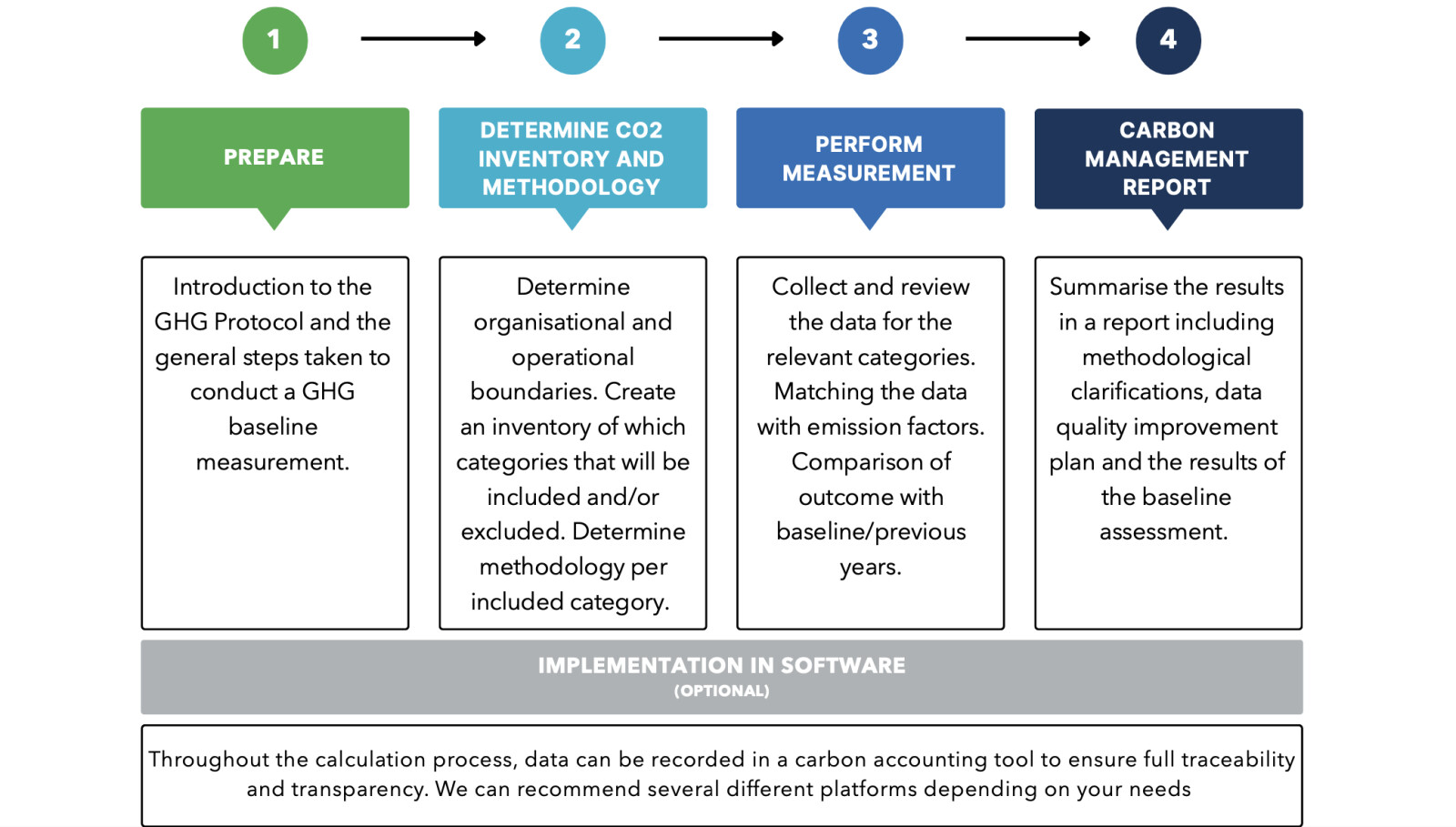
Climate and nature
Climate and nature are closely linked—and both are essential to the stability of our economy and the success of your business. Addressing climate change and protecting biodiversity is essential for businesses—not only to mitigate environmental risks but also to secure long-term resilience and sustainable growth. By taking proactive steps now, companies can reduce their carbon footprint, help reverse ecosystem degradation, and contribute to a more stable and sustainable operating environment—while also meeting growing stakeholder expectations and regulatory requirements.
We can support you with a range of services related to climate and nature. We also help you to think about internal and external reporting, and how to set up measurements for this purpose.
Greenhouse gas (baseline) measurement, data collection, and validation
Understanding your organisation’s carbon footprint starts with a clear and accurate greenhouse gas (GHG) baseline measurement. We will help you with measuring your scope 1, 2 and 3 emissions by working closely with your team to collect, analyse, and verify data specific to your organisation. We follow the GHG Protocol and sector specific standards to ensure your baseline is robust, reliable, and aligned with industry best practices.

Target setting incl. SBTi
In the journey toward sustainability, setting clear targets is crucial for driving meaningful action and demonstrating your commitment to tackling climate change. Targets provide a roadmap for reducing emissions, enhancing resilience, and meeting growing expectations from stakeholders, regulators, and investors.
Our services include:
- Emissions baseline assessment: We will analyse your current GHG emissions across Scope 1, 2, and 3 to establish a solid baseline for target setting.
- Target development: Using frameworks like the Science Based Targets initiative (SBTi), we will guide you in defining reduction targets that align with the latest climate science and industry standards.
- Decarbonisation strategy: We will help you identify the most effective emissions reduction pathways tailored to your industry and business, such as transitioning to renewable energy, improving energy efficiency, or decarbonising your supply chain.
- SBTi validation support: From compiling the necessary documentation to navigating the submission process, we will ensure your targets meet SBTi’s technical requirements and gain official validation.
- Actionable roadmaps: Once your targets are set, we will work with you to develop a detailed roadmap that outlines actionable steps, timelines, and milestones to meet your goals.
- Progress monitoring and reporting: We will provide tools and frameworks to track your progress, measure performance, and report transparently to stakeholders.
- Stakeholder engagement: We can assist in communicating your targets and plans to stakeholders such as employees, investors, and partners, building trust and fostering collaboration for successful implementation.
Climate transition plan
After measuring your GHG emissions and setting targets, it is important to create a strategic roadmap for how you are going to reach your reduction targets. A climate transition plan outlines how an organisation will adapt its operations, value chains, and business model to align with global climate goals and set reduction targets.
We will work with your team to conduct a thorough assessment of your current emissions, identify key risks and opportunities, and define clear reduction pathways. Whether it is improving energy efficiency, transitioning to renewable energy, or decarbonising your supply chain, we provide the expertise and resources needed to craft a plan that is both ambitious and achievable.
A robust climate transition plan is often guided by frameworks like the Science Based Targets initiative (SBTi) and includes measurable targets, governance structures, and mechanisms to track progress over time.

Climate risk and scenario analysis
As climate change accelerates, businesses face growing risks that can impact operations, supply chain, and long-term growth. By doing a climate risk and scenario analysis, you identify, assess, and address the physical and transition risks your organisation may face.
Together with your team we will identify reference scenarios, for example one scenario where global warming is limited to 1.5°C in line with the Paris Agreement and one scenario where the average global temperature increase by 3-4°C. We then look at drivers and impacts on your business in these scenarios. These insights are brought together in a set of workshops where (senior) management assesses risks and opportunities. Finally, we help you formulate possible measures to address the identified vulnerabilities and opportunities.
Our approach is aligned with the requirements of the CSRD (ESRS) and the Task Force on Climate-related Financial Disclosures (TCFD).
TCFD and TNFD
In today’s world, climate- and nature-related risks and opportunities are growing in frequency and impact. Identifying and disclosing these in line with recognised frameworks like TCFD and TNFD help organisations build resilience, create long-term value, and align with regulation.
We start by understanding your organisation’s context and its dependencies on nature and climate. Together, we define clear goals for the TCFD and/or TNFD analysis. For TCFD, we map risks and opportunities, perform scenario analysis, review governance, and explore integration into strategy and risk management. For TNFD, we use the LEAP approach (Locate, Evaluate, Assess, Prepare) to identify material nature-related dependencies and impacts.
Throughout, we involve key teams, build internal capabilities, and co-create a tailored roadmap—ensuring your outcomes are not just compliant, but decision-useful and future-proof.
Policy development and writing
Clear and actionable policies on climate and nature are critical to demonstrate environmental accountability and driving meaningful change. Under the CSRD, policies are a key component of managing your impacts, risks, and opportunities.
We take a personalised approach to developing policies for you, starting with an in-depth understanding of your business operations, goals, and industry context. Whether it is addressing carbon reduction, biodiversity protection or sustainable resource management, we work with you to create actionable policies that reflect your organisation’s values and commitments.
Policies are only effective if they lead to tangible outcomes. We help you embed your climate and nature policies into your operational processes. Clear, well-crafted policies not only help you manage risks and seize opportunities but also demonstrate your leadership in sustainability, building trust and credibility.
-en.webp)
